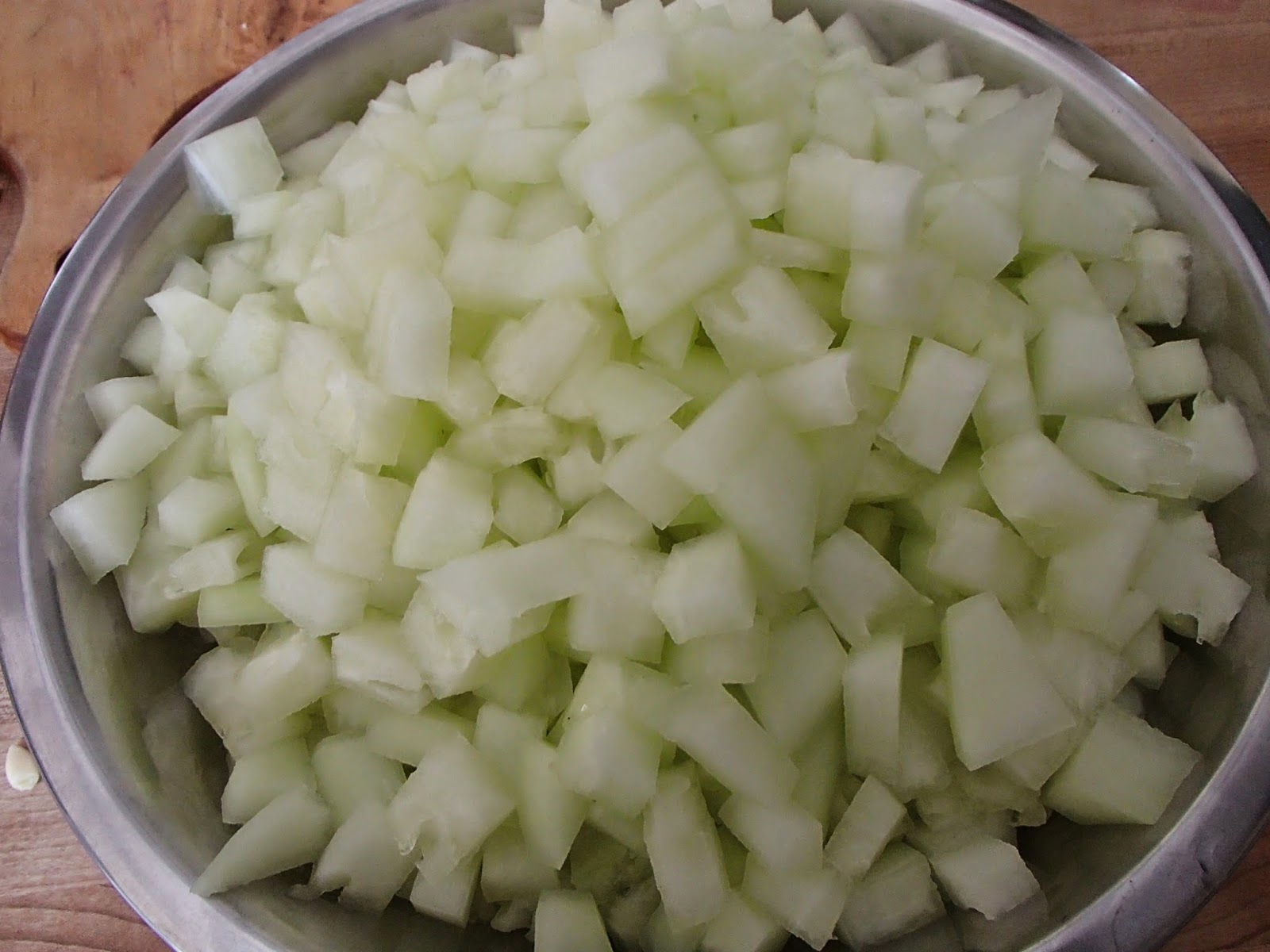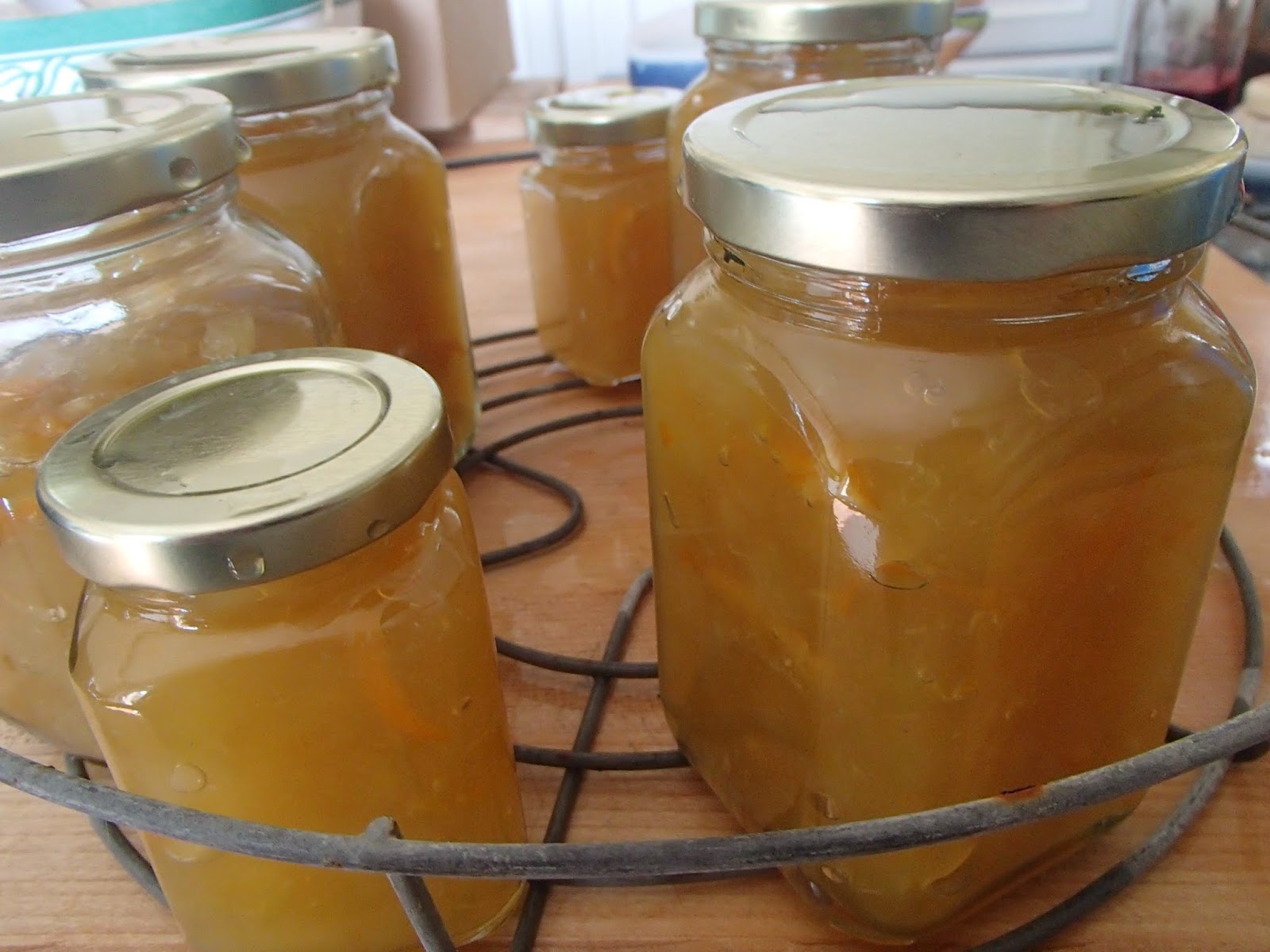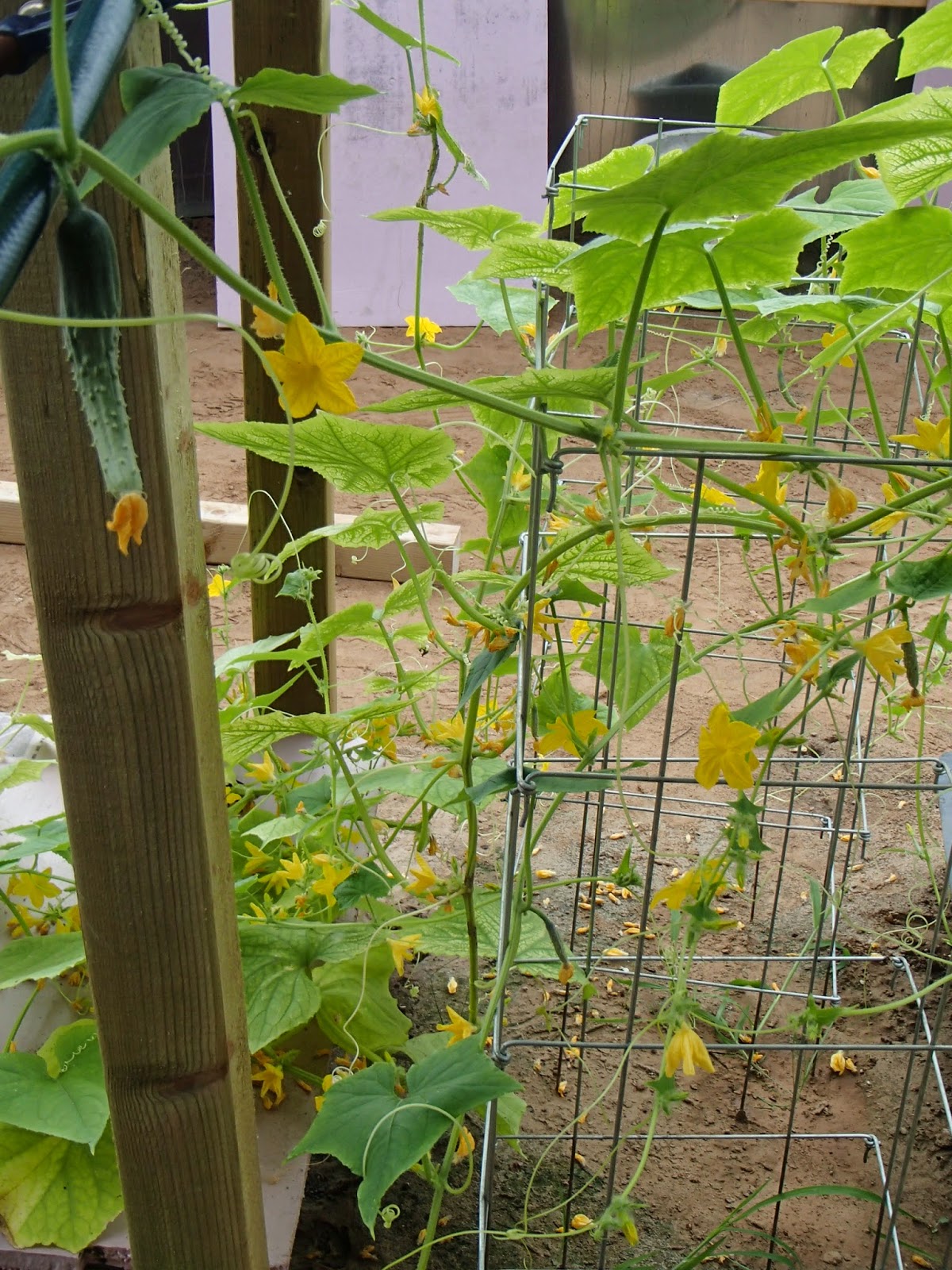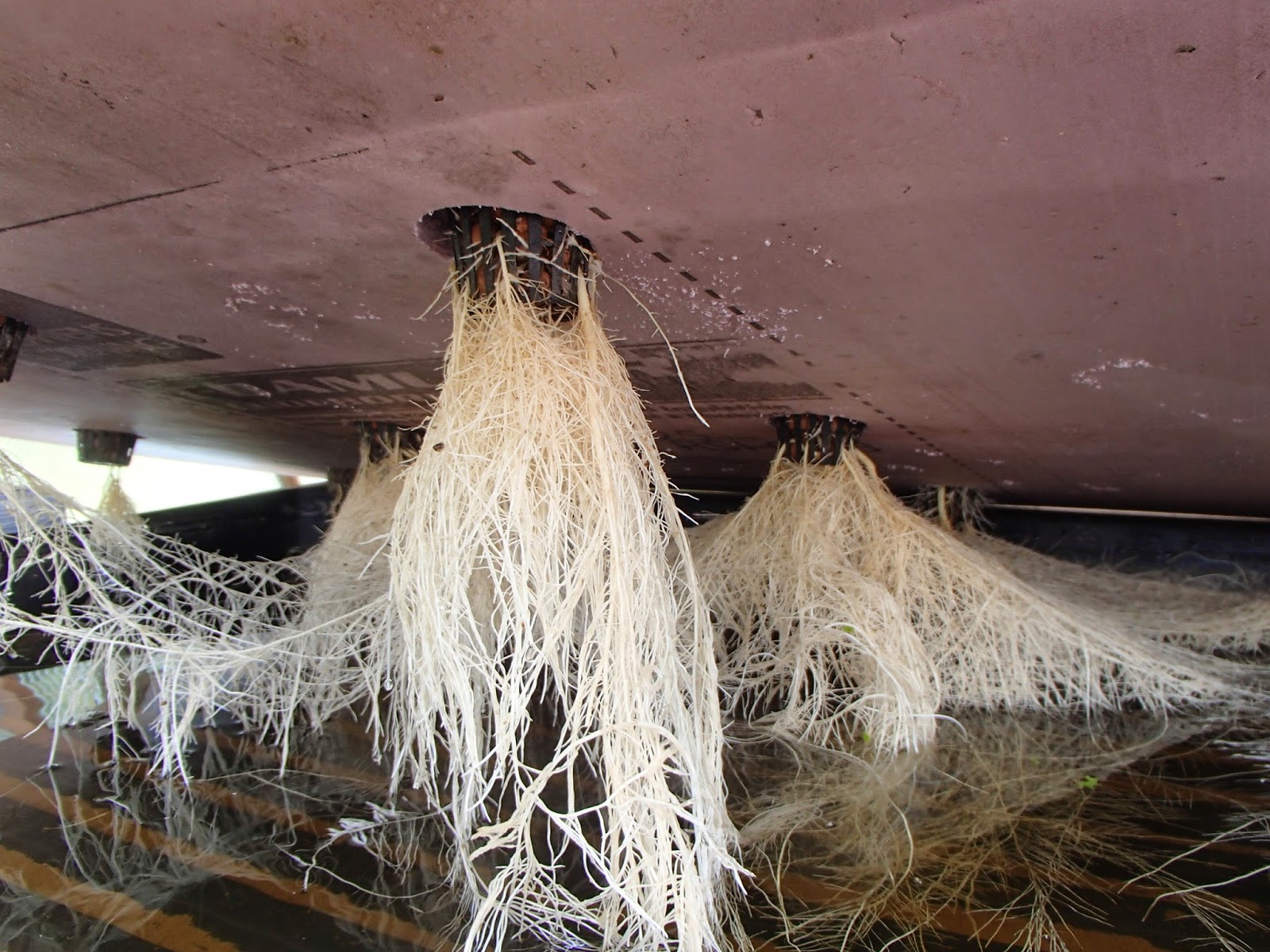To view the latest from Ridge Berry Farm visit our new blog and site!
Last year, we were lucky to grow both a Russian heirloom Watermelon and a French heirloom Cantaloupe. We had to fight with local rodents for the fresh Canteloupe. Meanwhile, the Watermelons were proven to be very seedy.
This year, we decided to plant Citron Watermelons. These things grow wild in the Southern US and although often described as not edible, we felt this might be a great melon to work with.
The Citron Watermelon is technically the ancestor of all currently marketed Watermelons. It traces its roots to Africa. Unlike what its name would imply, the Citron Watermelon is in no way related to the Citron, nor does it have a strong acidic taste. In the wild, two varieties are normally found; one which is bland, the other bitter.
This week it was time to pick a few.
 |
| Our first Citron Watermelon harvest |
The Watermelons will grow to some 7 inches in diameter and they actually look very similar to a lot of heirloom Watermelons, including the Russian variety we planted last year. Given their taste, rodents were not an issue this year; for us, it was now time to transform these into an appetizing edible.
When sliced open, the flesh of the melon is a pale green. The taste of the flesh is very similar to Watermelon rind. In fact, we've determined that the Citron could find its place in any recipes calling for Watermelon rind (and vice versa).
 |
| Dissecting the Citron Watermelon |
Our first effort was a preserve and the first step entailed seeding, peeling and dicing the melons. This turns out to be the most tedious part of the process. As for the Russian heirloom melons, these things were loaded with seeds. The best way to address this is to thinly slide the melon prior to seeding.
 |
| Seeded and cubed Citron Watermelon |
For roughly 3 lbs of diced melon (2 melons), we added the juice of 4 Clementines, 6 Tbsp. of Lemon juice and 3 Tbsp. of Vanilla extract. We then thinly sliced the rinds of two Clementines and added this to the mixture. Finally, we added 1 1/2 lbs of white sugar.
Letting this mixture sit overnight will extract all of the juices from the melon and prepare the mixture for the following step.
 |
| The Watermelon-Clementine-sugar mixture will turn "soupy" if left to stand for a sufficient amount of time |
The final step is to simply let this mixture simmer and eventually bring it to a boil. This will reduce significantly. It turns out that the Citron holds a lot of Pectin, so after a good amount of simmering, the preserve will easily set.
As a final stage, we simply load our preserve in sterilized jars and once sealed boil the jars for another 10 minutes. The result is actually quite nice and a delicious new taste experience for those coming to our market.
 |
| A new taste at the market: Citron Watermelon preserve |
We didn't exactly stop there. We challenged both Chef and Sous-chef to come up with their own concepts.
Sous-chef has made some candied Citron (simply dipped a few times in simple syrup), while Chef decided to apply the Citron to a Glyko Karpouzi recipe. Glyko Karpouzi is a sweet pickling of Watermelon rind usually served with tea or as an appetizer when guests are welcomed into your home
 |
| Chef's Citron-based Glyko Karpouzi |
The result is a very sweet, thinly sliced Watermelon rind which (with the right spices) has a taste very similar to poached pear. It would make a great side to certain heavy meats like pork.
Elsewhere on the farm, we are rapidly harvesting many of our vegetables and fruits. The most interesting of these is our new Scarlet Runners. The plants are flowering beautifully and as predicted are attracting humming birds.
 |
| The Scarlet Runners have done surprisingly well |
The most interesting aspect to the Scarlet Runner however are the very long beans now being generated by the plant (well over 8 inches). We had to try them and surprisingly discovered perhaps the most beautiful beans we've ever seen.
 |
| Inside the Scarlet Runner bean pod |
The Scarlet Runner bean needs to be cooked. Regrettably the bean looses its colour in the process, but the bean is delicious (very reminiscent of sweet peas).
We'll conclude this week with an update on the Growing Dome. Having adopted the Kratky method of hydroponics, we cannot believe how effective our hydroponic beds have become.
Our "monster Cucumber" is now fruiting just about everywhere on its rather long vine. It is taking a large amount of space in the center of the dome and is very much ahead of its counterparts planted in our raised beds.
 |
| The "monster Cucumber" plant is now fruiting in the Dome |
Even our tomatoes (originally starved of nutrients because of the Algae) are now also ahead of their counterparts outside the dome. We did not expect this and had kept them in the tall hydroponic tables of the Aquaponic set-up.
 |
| Our Growing Dome Tomatoes |
The Tomatoes' roots proved to be superbly healthy and well developed.
 |
| Healthy roots make for a very healthy Tomato plant |
The Dome's Tomatoes are now flowering and tall enough that we had to transfer them into our version of "Dutch buckets".
 |
| Our Kratky "Dutch buckets": no oxygen or fluid pumps! |
We'll now have to see if they continue on this path.
For our final picture, we have decided to focus on our Dome's propagation experiments. One of the more successful propagations has been the Goji berry. These little cuttings are now flowering and look like they will actually provide us a few berries!
 |
| Flowering Goji berry cuttings. |
No comments:
Post a Comment